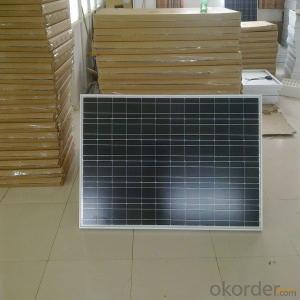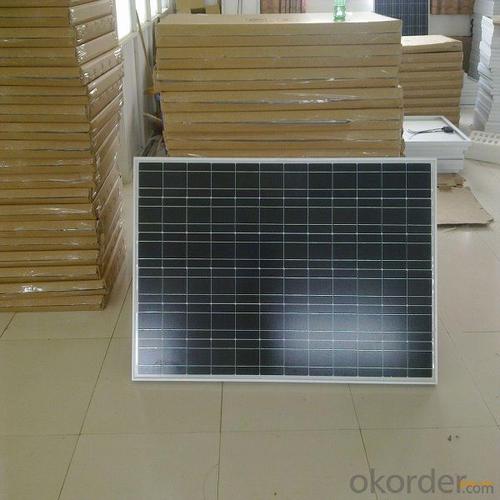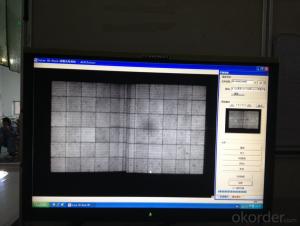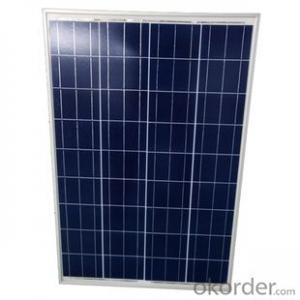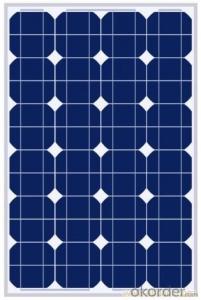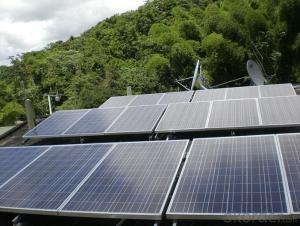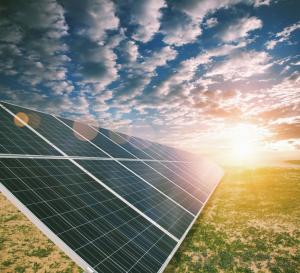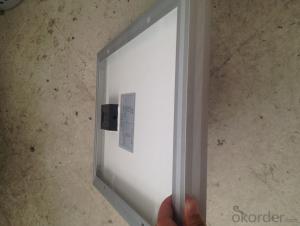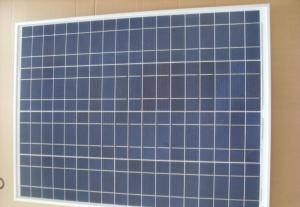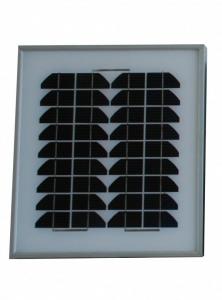High Quality Polycrystalline Solar Panels for Tiny House
- Loading Port:
- Tianjin
- Payment Terms:
- TT OR LC
- Min Order Qty:
- 1000 watt
- Supply Capability:
- 10000000 watt/month
OKorder Service Pledge
OKorder Financial Service
You Might Also Like
Specification
Product Description
Key Specifications/Special Features
Maximum power voltage Vmp: 29.5V
Maximum power current Imp: 7.45A
Open circuit voltage Voc: 37.0V
Short circuit current Isc: 8.10A
Maximum system voltage V DC: 1,000V
Encapsulated solar cell efficiency nc: 18.10%
Module efficiency nm: 14.90%
Solar cell and configuration: polycrystalline
Solar cell technology and size: 156 x 156mm
Number of bypass diodes and type: 3-piece
Maximum series fuse rating: 15A
Temperature coefficient of power: +0.48%/°C
Temperature coefficient of Voc: -0.34%/°C
Temperature coefficient of Isc: -0.037%/°C
Nominal operating cell temperature NOCT: 25°C
Standard test conditions
Irradiance 1,000V/m2, AM1.5 spectrum, moduletemperature 25°C
Operating temperature: -40 to +80°C
Dimensions: 1,640 x 992 x 50mm
Installation hole dimensions: could be following request
Cable length: 90mm
Weight: 22.5kg
Number of draining holes in frame: 4-hole
Construction: 60-piece (6 x 10)
Frame: 50mm
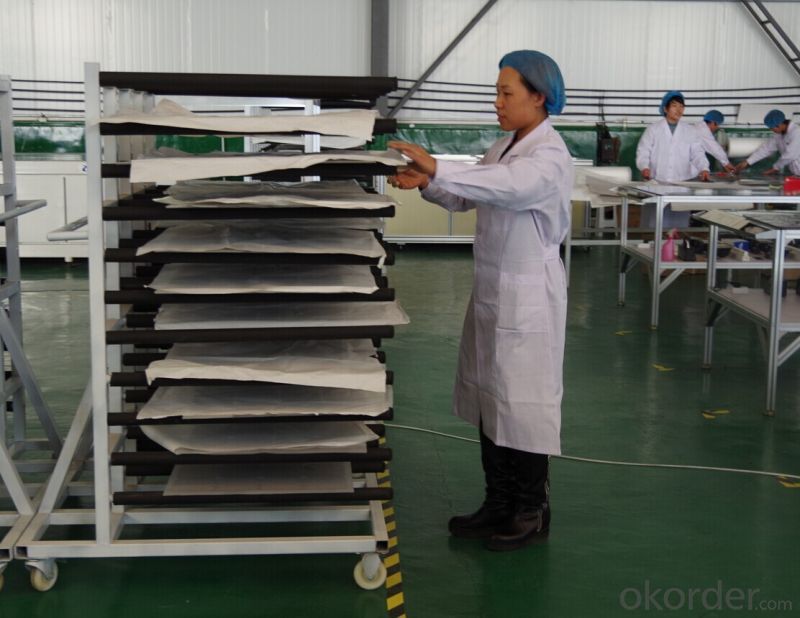
Product Details
| ELECTRICAL CHARACTERISTICS | ||||||||||
| Maximum Power as per STC | Pmax(W) | 230 | 235 | 240 | 245 | 250 | ||||
| Power Tolerance | % | ± 3% | ||||||||
| Maximum Power Voltage | Vm(V) | 30.48 | 30.6 | 30.66 | 30.35 | 30.46 | ||||
| Maximum Power Current | Im(A) | 7.6 | 7.68 | 7.83 | 8.08 | 8.21 | ||||
| Open Circuit Voltage | Voc(V) | 36.6 | 36.72 | 36.84 | 36.36 | 36.5 | ||||
| Short Circuit Current | Isc(A) | 8.17 | 8.23 | 8.32 | 8.79 | 8.93 | ||||
| Maximum System Voltage | VDC | 1000 | ||||||||
| Cell Efficiency | % | 15.8 | 16.1 | 16.4 | 16.8 | 17.1 | ||||
| Module Efficiency | % | 14.1 | 14.4 | 14.7 | 15.0 | 15.3 | ||||
| Cells per Module | Pcs | 60 | ||||||||
| Cell Type | Polycrystalline silicon | |||||||||
| Cell Size | mm | 156 x 156 | ||||||||
| Bypass Diodes | Pcs | 12Amp, 6 pcs | ||||||||
| Max. Series Fuse Rating | A | 15A | ||||||||
| Temperature coefficient of Isc | % / | 0.05 | ||||||||
| Temperature coefficient of Voc | % / | -0.35 | ||||||||
| Temperature coefficient of power | % / | -0.47 | ||||||||
| NOCT- Nominal operating cell temperature | 47 ± 2 degree | |||||||||
| Operating Temperature | -40 to +85 degree | |||||||||
| MECHANICAL CHARACTERISTICS | ||||||||||
| Dimensions | mm | 1650 x 990 x 50 | ||||||||
| Weight | Kg | 19.8 | ||||||||
| Type of Junction Box | TUV certified, IP65 | |||||||||
| Cable Type, Diameter | TUV certified, 4mm 2, 90 cm in length | |||||||||
| Connector | compatible to Type 4 (MC4) | |||||||||
| Tempered Glass | 3.2 mm, high transmission, low iron | |||||||||
- Q: Thanks
- Initial cost , space occupied AND DAILY CYCLE (unless through a battery) are the only disadvantages. REST ARE ALL ADVANTAGES
- Q: Can solar panels be installed on factories or manufacturing facilities?
- Yes, solar panels can definitely be installed on factories or manufacturing facilities. In fact, these large industrial buildings often have expansive roof spaces that are ideal for installing solar panels. By harnessing solar energy, factories and manufacturing facilities can significantly reduce their reliance on traditional energy sources, lower their carbon footprint, and potentially save on electricity costs in the long run.
- Q: I thought that I had a fairly good understanding of watt's law, but i'm starting to doubt myself.If I have a load of 4500watts at 240 volts, how many watts of solar panels do I need, if the solar panels are at 2v?Yes, Yes... I have a charge controller, batteries, etc...So the way I looked at this at first:watts = volts * amps For the load4500 = 240 * xx would be 8.75aFor the power source (each solar panel)00 = 2 * xx would be 8.3a8.75 / 8.3 = 2.25, rounded up = 3So... based on that I came to the conclusion that I needed 3 solar panels...But... then I was thinking. Does it work that way?Or do I need 4500 / 00 = 45, aka 45 solar panels?In other words...If I have a 2v power source, how many watts do I need to drive a load of 4500w at 240v?ThanksMatt
- The easy way is to just use the power values. You need 4500W. Each solar panel delivers 00W (from a value in your working). Therefore you need 4500/00 = 45 solar panels. This is a crude calculation, ignoring efficiencies, voltage conversion losses and losses due to internal resistance. You would probably need quite a few more than 45 panels. ___________________________ I'll explain how to do the calculation your way. Each solar panel delivers 00W with a voltage of 2V. So the current is 00/2 = 8.333A. Each solar panel delivers 8.333A at 2V. But you require 8.75A at 240V panel delivers 00W. To get 4500W, you need: 8.75/8.333 = 2.25 times more panels to increase the current AND 240/2 = 20 times more panels to increase the voltage. So overall you need 2.25 x 20 = 45 panels. Of course if the power output of each solar panel is not 00W, you have to change the above calculation accordingly.
- Q: How efficient are solar panels when it comes to turning light into energy? If it's not 00%, why? Can it be improved? Also, how do solar panels work, exactly.
- SUNLIGHT okorder /
- Q: I need a list of worldwide solar panel manufactures from china, US, Spain, Germany, Japan etc...Can any one direct ne to such place?I rather it will also contain comparison of parameters like efficiacy, quality etc and to be divedied by country of manufacturing.Thank you
- You can't buy at that level unless you are connected to governement. A lot of production is already spoken for for years to come. Where you live determines what you can legally buy and install. The EU has it's own certification, the US has 2 sets, the Canadians have their own. Your answer also requires knowing the use for the solar panels, whether it is grid-tie, off-grid or standalone to power an appliance. And you have to choose mono crystalline, poly crystalline, or thin-film.
- Q: Can solar panels be used in areas with limited access to electricity?
- Yes, solar panels can be used in areas with limited access to electricity. Solar panels convert sunlight into electricity, making them a suitable and sustainable solution for generating power in remote locations or areas without a reliable electricity grid. They can provide clean and renewable energy, helping to meet the electricity needs of communities with limited access to traditional power sources.
- Q: Can solar panels be used for powering agricultural equipment?
- Yes, solar panels can be used for powering agricultural equipment. Solar energy can be harnessed and converted into electricity through photovoltaic cells in solar panels. This electricity can then be used to power various agricultural equipment such as water pumps, irrigation systems, electric fences, and even machinery like tractors and harvesters. Solar-powered agricultural equipment offers a sustainable and cost-effective alternative to traditional fossil fuel-powered machinery, reducing both carbon emissions and operating costs for farmers.
- Q: Can solar panels be used to power a museum?
- Yes, solar panels can be used to power a museum. Solar panels capture sunlight and convert it into electricity, which can then be used to power various electrical systems within the museum. This sustainable energy source can help reduce reliance on traditional grid electricity and lower the museum's carbon footprint. Additionally, advancements in solar technology have made it more efficient and cost-effective, making it a viable option for powering both small and large-scale facilities like museums.
- Q: Can solar panels be used to power a satellite?
- Yes, solar panels can be used to power a satellite. Solar panels on a satellite are designed to convert sunlight into electricity, which is then used to power various systems and instruments onboard the satellite. The panels are typically made of photovoltaic cells that generate electricity when exposed to sunlight, allowing satellites to operate in space where traditional power sources like batteries or fuel cells may not be practical.
- Q: With no moving parts, no fuel piping and so on...
- They are made of costly materials and require expensive manufacturing processes. The market has been limited because people are not catching on very well to the new idea. The more we buy and use solar panels, the more the price will come down.
Send your message to us
High Quality Polycrystalline Solar Panels for Tiny House
- Loading Port:
- Tianjin
- Payment Terms:
- TT OR LC
- Min Order Qty:
- 1000 watt
- Supply Capability:
- 10000000 watt/month
OKorder Service Pledge
OKorder Financial Service
Similar products
Hot products
Hot Searches
Related keywords
